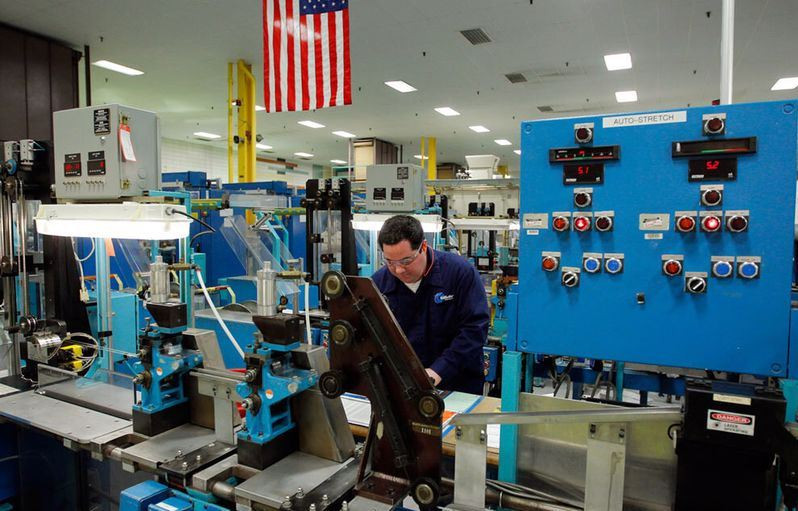Having reached multi-year peaks around 114.80 at the end of September, the greenback lost its former confidence, and its price movement became somewhat unstable.
It is worth noting that the trend towards the strengthening of the US currency began in the spring of 2021 and rested on two main pillars. This is the expansion of the interest rate differential between the United States and other leading countries, as well as the risks of a global recession.
The first factor implies that higher rates in America attract investors to the dollar, and the second assumes the demand for USD as a protective asset.
According to Societe Generale strategists, the greenback has adjusted almost 40% of the 2021-2022 rally over the past few weeks.
"The basis of the USD reversal is the growing belief that a soft landing is more likely for most economies than a hard one, that the risks of geopolitical tails are getting smaller, and inflation in most cases is in the process of forming a peak," they said.
"We continue to believe that the danger of a "hard landing" of the American economy is growing, but it is also moving further into the future than forecasts suggest. A "hard landing" of the European economy looks less likely since the energy support packages were announced. But the medium-term effect for the dollar remains the same - it looks like it will head to the 90-100 range, where it was in 2018-2019. But will the USD be able to do this without numerous corrections? Most likely, it will form a series of peaks, as in 2000-2002," Societe Generale reported.
A stronger-than-expected decline in US inflation in October led to a drawdown of the greenback by almost 4% last week, which was the largest weekly drop in a decade.
A further decline in USD – by about 0.5% – this week allowed the EUR/USD pair to rise to multi-week highs.
However, BMO Capital Markets analysts believe that the dollar will recover a significant part of the recent decline.
"Expect the dollar to grow by 3% on the horizon of one month and by 4% by the end of the year," they said.
"We think that the strengthening of the dollar will continue during the first quarter of next year, before being replaced by a gradual weakening as risk appetite increases and the Fed suspends its actions," the analysts added.
UBS analysts have a similar opinion.
"We believe it is too early to expect sustained dollar weakness, and we maintain our view of a USD peak by the end of the first quarter of 2023," they said.
"We believe that the Fed will want to see lower inflation for several consecutive months before considering moving to a more dovish position. In addition, the central bank needs to see signs of a cooling of the labor market. However, the latest data still point to a significant increase in the number of jobs, low unemployment and rapid wage growth," UBS noted.
Nevertheless, the weakening of inflation in the US, if it persists, will mean that the Federal Reserve may slow down or even suspend the aggressive rate hikes that led the dollar to multi-year highs against a basket of currencies earlier this year.
"At some point, as policy tightens further, it will become advisable to slow down the pace of rate hikes, so far we are assessing how our cumulative policy adjustments affect the economy and inflation," Fed Chairman Jerome Powell said back in September.
History shows that when the US central bank reaches its final rate – currently estimated at about 4.90% by the middle of next year – the first rate cut in the next easing cycle usually occurs within a few months.
The longest in the last 50 years is the 16-month break from June 2006 to September 2007 between the final rate hike and the first reduction in the new cycle. May 2000-January 2001 and December 2018-–July 2019 were the eight-month intervals between the final increase and the first reduction.
However, all the other so-called "turning pauses" over the past half century have been much shorter - five months in 1995 and no more than three months in several episodes scattered throughout the 1970s and 1980s.
Futures on the federal funds rate now predict its decline by about 50 bps in the second half of next year.
The US data published on Tuesday showed that producer prices in the country (PPI index) in October increased by 8% year-on-year and by 0.2% compared to September. Experts on average predicted an increase in the first indicator by 8.3%, the second by 0.4%.
Core manufacturing inflation slowed to 6.7% year-on-year in October from 7.1% in September.
Last week, we received evidence of a slowdown in consumer inflation in the United States, and now also a slowdown in producer price inflation in the country.
Nevertheless, the rhetoric of the representatives of the Fed retains a hawkish bias. The current message of the central bank is the following – inflation has not yet been defeated, so it is necessary to continue raising rates.
However, recent data indicate that the US central bank can already raise rates at a lower rate than it did earlier this year.
"Signs of a peak in general and core inflation in the United States were good news for everyone, given that the world's largest economy was at the forefront of the global inflation cycle," Francois Villeroy de Galot, head of the French central bank, said on Tuesday.
"The tightening of monetary policy in the US has had a strong impact on the rest of the world due to the high dollar exchange rate," he added.
The day before, the greenback was under strong selling pressure after the release of a weaker-than-expected report on producer price growth, which added to the "cool" data on consumer inflation in the United States last week, which hinted that the sharp rate hike by the Fed may be nearing the end.
On Tuesday, the USD index fell by about 1.4% at the moment and touched three-month lows at 105.30.
Amid the weakening of the dollar, the EUR/USD pair reached its highest values since the end of June, rising above 1.1400.
Investors drew attention to some improvement in the state of the eurozone economy. Thus, the deficit of the foreign trade balance of the currency bloc in September decreased to €34.4 billion from €50.9 billion in August. Analysts had expected a deficit of €44.5 billion.
In addition, economic growth in the currency bloc was confirmed in the third quarter. According to the second estimate, in the last quarter, eurozone GDP expanded by 2.1% year-on-year and by 0.2% quarter-on-quarter. The indicators completely coincided with the first assessment.
The EUR/USD pair made a sharp reversal and fell below 1.0300 after news broke about a rocket explosion on the territory of Poland, which killed two people. A number of media outlets wrote that the missile could have come from the territory of Russia.
This caused traders to move away from risky assets towards a more reliable dollar.
As a result, the USD index bounced off three-month lows towards the 107 mark.
At the beginning of Wednesday, the greenback maintained its fighting spirit, receiving support from a surge in geopolitical tensions.
However, the rally of the dollar, which is a safe haven, came to naught as the market recovered from the shock caused by the rejection of risks on Tuesday.
Poland and NATO said on Wednesday that the previous day's explosion was probably caused by an accidental firing of Ukrainian air defenses, and not a deliberate Russian strike, easing fears that the conflict between Kiev and Moscow could spread beyond Ukraine.
"The foreign exchange market is stabilizing, assuming that the incident in Poland does not necessarily mean an escalation of the conflict in which NATO needs to intervene," National Australia Bank strategists said.
Tracking the fact that the wave of risk aversion has waned, as well as taking advantage of the weakening of the positions of the greenback, the main currency pair was able to compensate for its recent losses and resumed growth.
The 1.0400 barrier now seems to act as an immediate resistance for EUR/USD before the 1.0420 mark, followed by the 1.0480 and 1.0500 levels. A confident breakdown of the last level will allow the pair to target the 1.0575-1.0580 zone. Subsequent long positions outside the 1.0600 round figure will be seen as a new trigger for the bulls and will pave the way for further growth for the pair.
On the other hand, a sustained break below the 1.0300 mark will confirm that the recent strong rally observed over the past two weeks has run out of steam. Subsequent sales below the 1.0280-1.0270 area will shift the short-term trend in favor of the bears and make the pair vulnerable to retesting the round level of 1.0200. The decline can be continued in the direction of the 100-day moving average, which is now in the area of 1.0100-1.0090.













